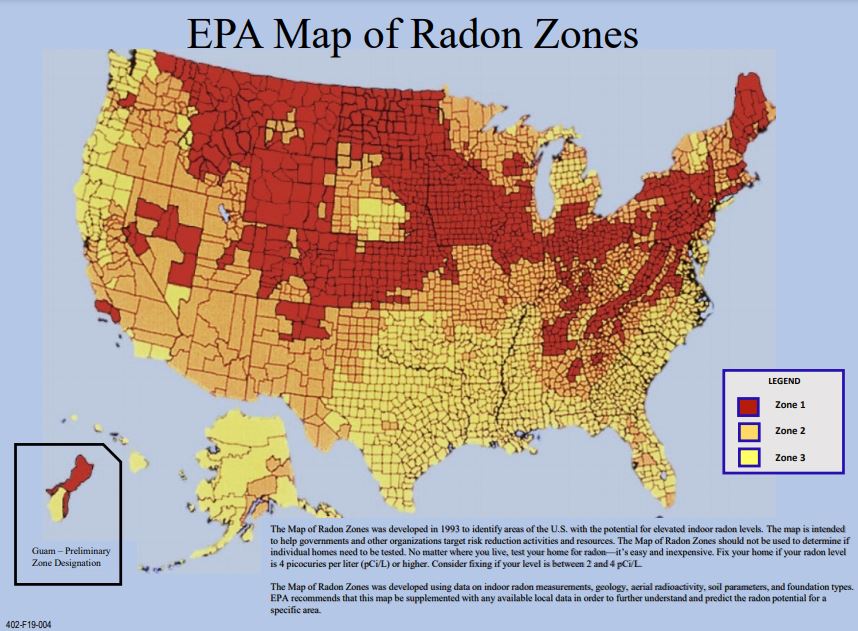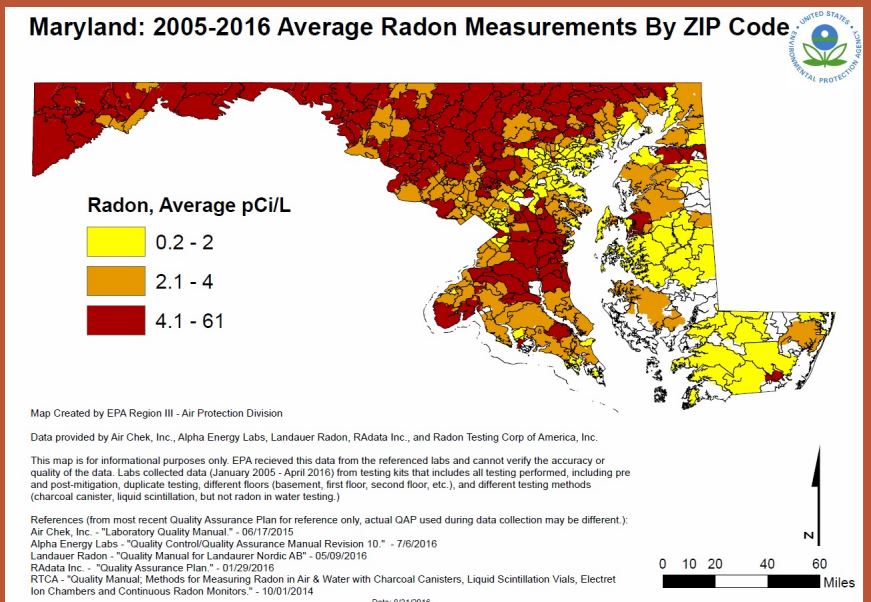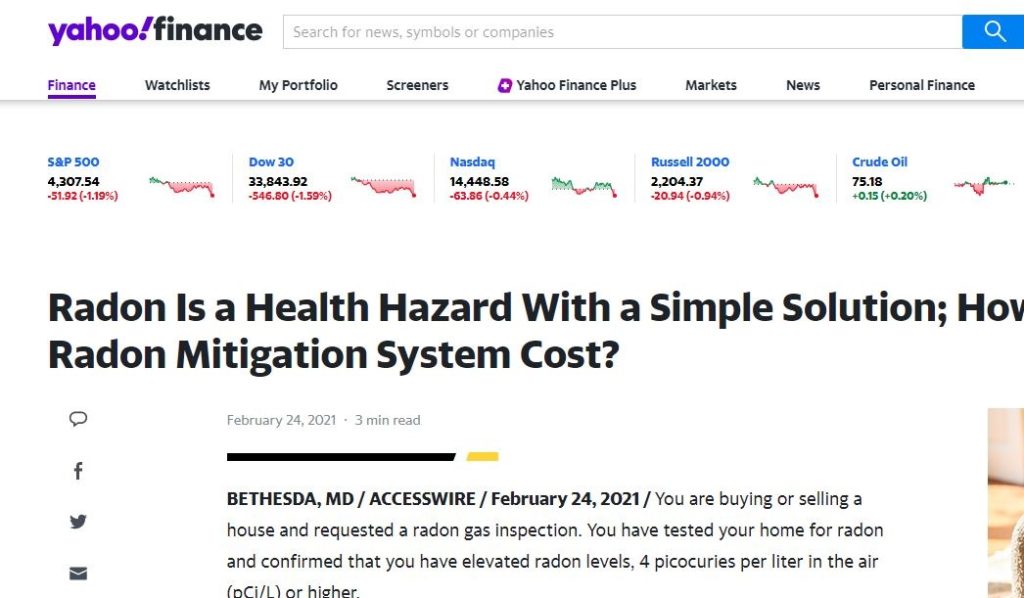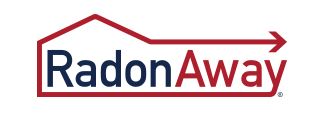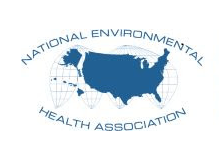what is radon gas?
Radon is a naturally occurring radioactive gas that is produced by the decay of uranium in soil, rock, and water. It is colorless, odorless, and tasteless, which makes it difficult to detect without specialized equipment. Radon can seep into homes and other buildings through cracks and gaps in foundations and other structural elements. Exposure to high levels of radon gas over a prolonged period can be harmful to human health, particularly increasing the risk of developing lung cancer. It is the second leading cause of lung cancer after smoking, and is responsible for around 21,000 lung cancer deaths in the United States each year, according to the Environmental Protection Agency (EPA). Radon is present in varying levels in almost all parts of the world, and testing is the only way to know if it is present in your home or building.
Radon is a naturally occurring gas that is found in the earth’s crust, soil, and rocks. It can also be found in groundwater, which can release radon gas into the air when it is used in the home for drinking, bathing, and other purposes. Radon is a radioactive gas, which means that it emits radiation as it decays. This radiation can damage the DNA in cells and increase the risk of cancer.
The most common way that radon enters a home is through cracks in the foundation or walls. It can also enter through gaps around pipes, cables, and other openings in the home’s foundation. Once inside, radon can accumulate to dangerous levels and pose a health risk to occupants.
Testing is the only way to know if radon gas is present in a home. Homeowners can purchase do-it-yourself test kits or hire a professional to conduct the test. If high levels of radon gas are detected, radon mitigation systems can be installed to reduce the radon levels in the home.
The EPA recommends that homeowners test their homes for radon every two years, and that action be taken if radon levels are found to be above 4 picocuries per liter (pCi/L). Radon levels between 2 and 4 pCi/L may also warrant further action, depending on individual circumstances. Taking action to reduce radon levels in the home can help to protect the health of occupants and reduce the risk of lung cancer.
Radon exposure is a serious health concern, as it is the second leading cause of lung cancer in the United States after smoking. According to the EPA, about 1 in 15 homes in the US has radon levels that are above the recommended action level of 4 pCi/L. Smokers who are also exposed to radon are at an even greater risk of developing lung cancer.
Radon levels can vary widely from one location to another, even within the same neighborhood. Therefore, it is important to test for radon gas in each home, as the radon levels in one home may be significantly different than those in neighboring homes. Radon levels can also vary over time due to changes in the weather, ventilation, and other factors.
Radon mitigation systems can be effective in reducing radon levels to safe levels. These systems typically involve the installation of a ventilation system or a gas-permeable layer in the foundation, which allows the radon gas to escape from the soil and be safely vented outside the building. The type of system that is appropriate for a specific home will depend on factors such as the construction of the home, the level of radon gas present, and the location of the radon source.
In summary, radon is a naturally occurring radioactive gas that can be harmful to human health, especially increasing the risk of developing lung cancer. Testing is the only way to know if radon gas is present in a home, and mitigation systems can be effective in reducing radon levels to safe levels. Homeowners are encouraged to test their homes for radon regularly and take action if high levels are detected.
In addition to testing for radon in homes, it is also important to be aware of the potential risks of radon in other environments. For example, radon exposure can also be a concern in workplaces such as mines, where workers may be exposed to high levels of radon gas over a prolonged period. The EPA provides guidelines for employers and workers on how to protect themselves from radon exposure in the workplace.
Another potential source of radon exposure is from natural gas extraction, as radon gas can be released during the drilling and production of natural gas. Homeowners who live near natural gas drilling operations or pipelines may want to have their homes tested for radon gas.
Overall, radon is a serious health concern that requires ongoing awareness and action. Testing for radon regularly and taking appropriate action if high levels are detected can help to protect the health of occupants in homes and other buildings. It is also important for employers and workers in industries where radon exposure may be a concern to take appropriate precautions to protect themselves from the harmful effects of radon gas.
lthier, safer indoor environments for ourselves and our families.

